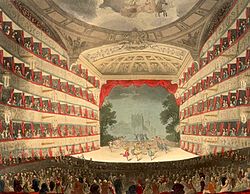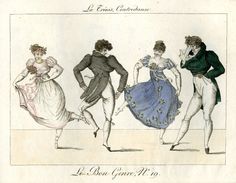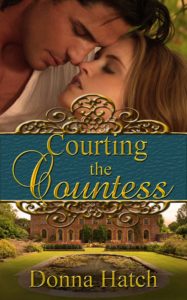The
spinster sister of the immortal poet William Wordsworth was present at the
creation of his and Samuel Taylor Coleridge's 1799 Lyrical Ballads,
which gave birth to the Romantic movement in English literature. She was also
present throughout her famous brother's adult life. The two, among the five
Wordsworth siblings orphaned and separated at an early age, would rejoin when
Dorothy Wordsworth was 24 and William 25, and they would live under the same
roof until William's death 55 years later.
Theirs
was an extraordinarily loving relationship, and Dorothy's prose is credited
with influencing her brother's poetry by the keen observations on nature she
recorded in the journals William encouraged her to keep. An example from
Dorothy's journal:One leaf on the top of a tree—the sole remaining leaf—danced round and round like a rag blowing in the wind.
From her brother's poem Cristabel:
The
one red leaf, the last of its clan,
That dances as often as dance it can,
Hanging so light and hanging so high,
On the topmost twig that looks up at the sky.
That dances as often as dance it can,
Hanging so light and hanging so high,
On the topmost twig that looks up at the sky.
The
first of her journals, The Alfoxden Journal 1798, takes up less than ten
percent of The Journals of Dorothy Wordsworth, edited by Helen Darbishire for
Oxford University Press in 1958. Of more importance are The Grasmere
Journals 1800-1803 because they record Dorothy Wordsworth's observations of
the Lake District which her brother and Coleridge made famous. Dorothy
and William moved to Dove Cottage in Grasmere the last month of the eighteenth
century. Two years later William married Mary Huthcinsons who, along with her
orphaned siblings, had been close to the Wordsworth orphans for many years.
There is no jealousy on Dorothy's part toward the woman with whom she would
share the brother she had lived alone with for the previous seven years.
Perhaps
that is because as Mary busied herself with mothering the five children she
bore William, Dorothy remained William's companion on their legendary walks
throughout the Lake District.
These
journals, which are copyrighted by the Dove Cottage Trust, give those of us
reading them two centuries later a feel for the minutia of their everyday life:
the ringing of distant sheep bells, haystacks in the fields, baking day.
Surprisingly, to Dorothy, plodding through the frost of a cold January day was
pleasant, but summer heat could send her to bed for days.
For
the author of English-set historicals, these journals are an invaluable
source for descriptions of the English countryside—its plants, birds, and other
creatures—in every season of the year. This little volume is a keeper.--Cheryl Bolen's newest release is Ex-Spinster by Christmas, a House of Haverstock
novella.























 By the Regency Era, dueling was outlawed. However, duels still happened more frequently than many people knew. The problem was, because courts were made up of peers, they were reluctant to charge another peer with murder as a result of a duel. There is a case where one nobleman was charged with murder and tried, but used the defense that his behavior was gentlemanly and honorable, meaning that he acted within the proper code of conduct. He was acquitted by his peers.
By the Regency Era, dueling was outlawed. However, duels still happened more frequently than many people knew. The problem was, because courts were made up of peers, they were reluctant to charge another peer with murder as a result of a duel. There is a case where one nobleman was charged with murder and tried, but used the defense that his behavior was gentlemanly and honorable, meaning that he acted within the proper code of conduct. He was acquitted by his peers.










